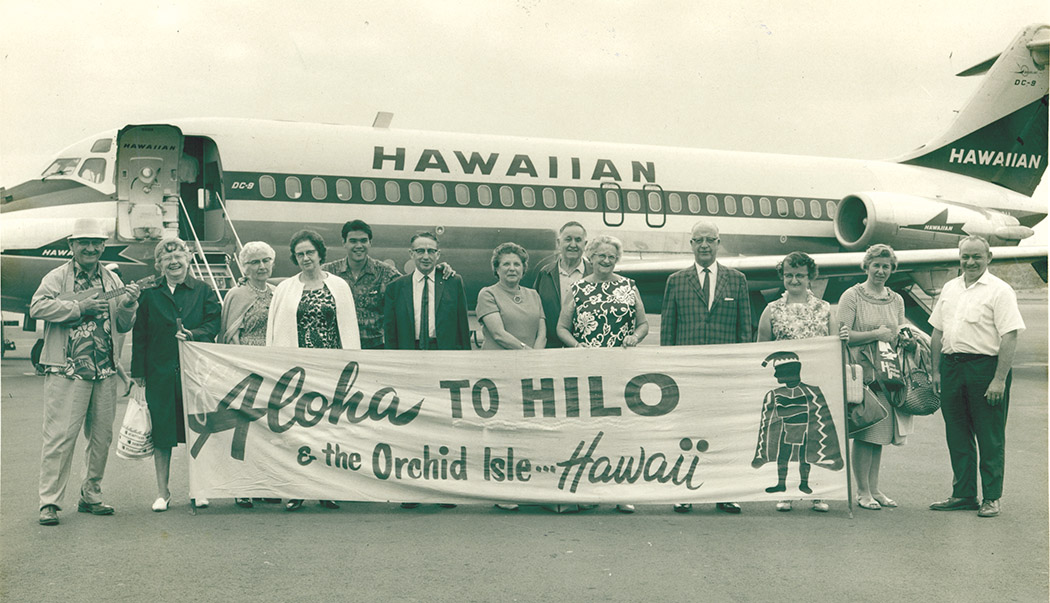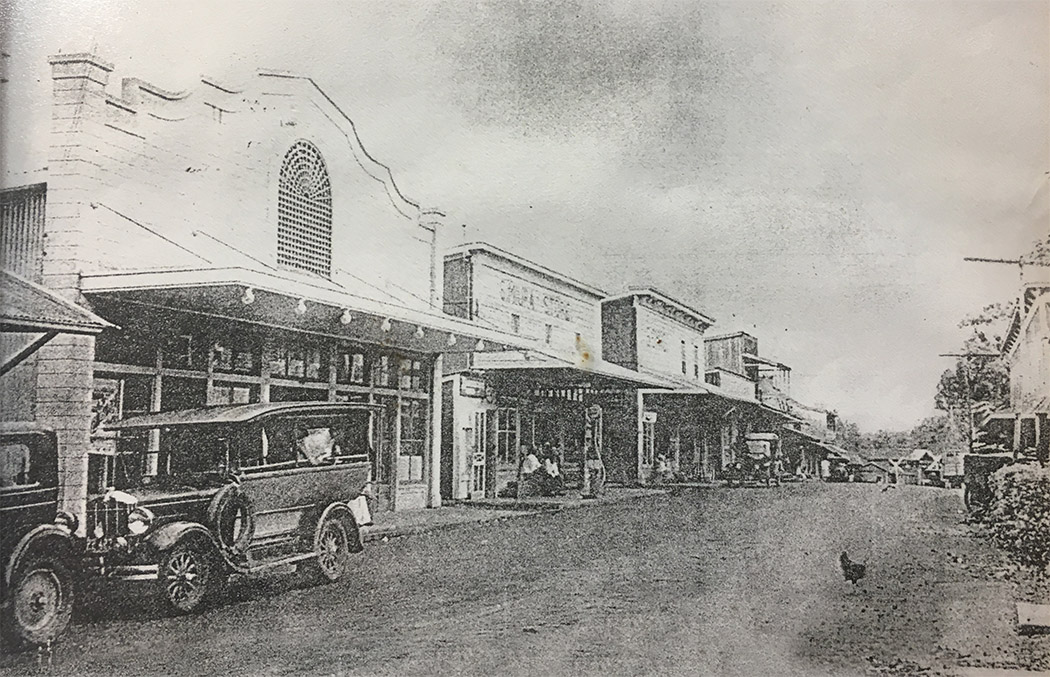
Pāhoa Town: Then and Now
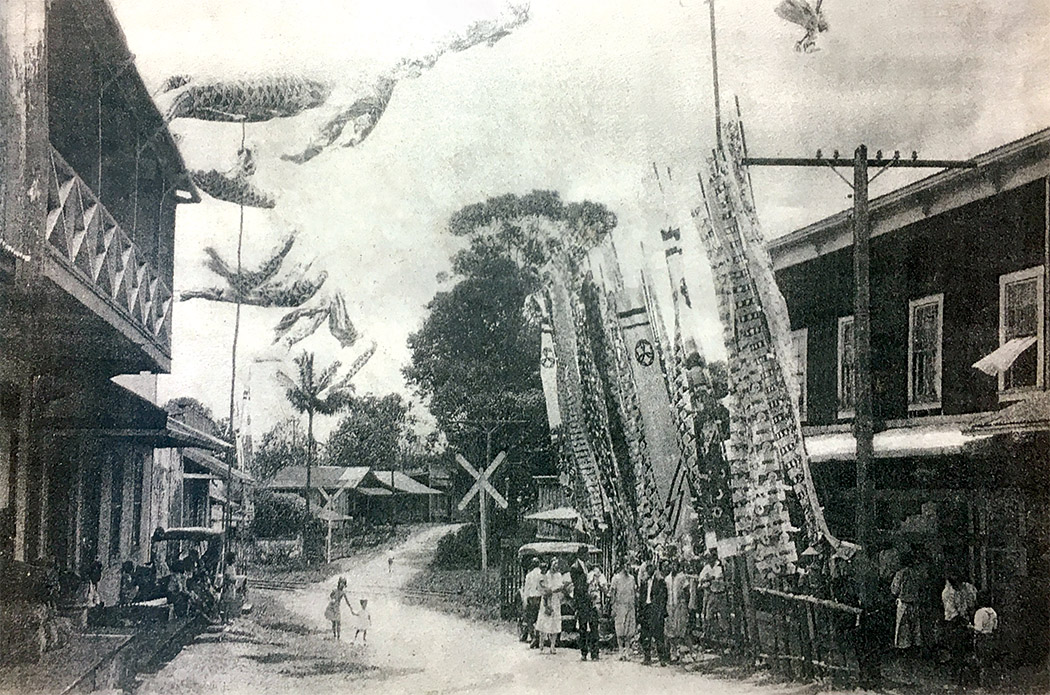
By Tiffany Edwards Hunt
Pāhoa’s old-timers will tell you that living on the East Rift Zone, they have dealt with flowing lava before. The volcanic soil attracted the Puna Sugar Company to the area, making Pāhoa rich in the history of immigrants—predominantly of Japanese descent, who came to work in the nearby plantation fields.
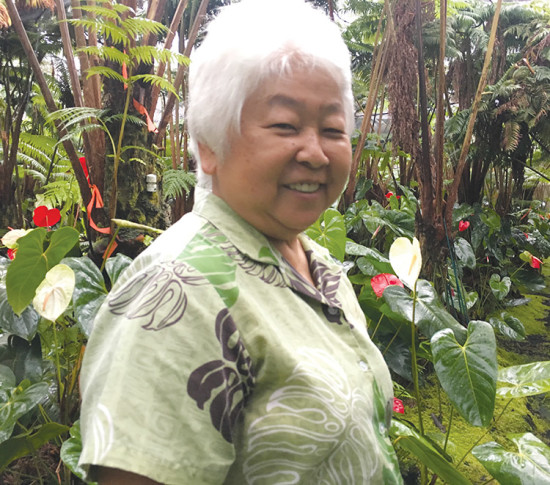
Aiko Sato, whose father Hiroo Sato wrote the book Pahoa Yesterday, notes the key difference between then and now is that there aren’t any more Issei (first generation) mom and pop stores.
A handwritten map of the “business section of Pahoa” published in the early 1920s lists a hotel, barber, tinsmith, tombstone shop, drug store, candy, tailor, shoe repair, and tabi (shoe) shops, all with Japanese surnames.
“I don’t know what business it is now, the building at the end of the main strip before Paul’s Service Station,” says Aiko, referring to the turquoise Cunningham Building that now houses the Mystic Closet clothing store and Habitat Tattoo. “It was the Kawamura’s residence, and before that it was a restaurant and bar,” she says.
All Issei women had anthurium patches in their yards, Aiko notes. “The women were homemakers. To supplement their spouses’ income, the women started growing anthuriums, because they needed ‘picha’ money. Picture—to go to the movies!”
“Going to the movies” meant going to the Akebono Theater. Aiko remembers Mrs. Kawai with her “huge reels” and “huge posters,” and the staple gun she used to put up the posters. “She would just sit on the porch over there,” Aiko says, pointing in the direction of what is now a vacant lot. The historic Akebono Theater and its neighboring Luquin’s Mexican Restaurant burned down in January of 2017.
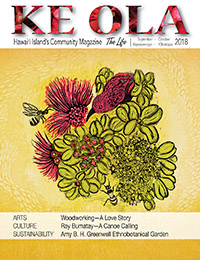
Owned by Hanjiro Kawai, the Akebono Theater was built in 1917 and up until World War II, there was a sign in English and another one with Japanese characters that read “Akebono Za Gekijo” (theater).
Aiko recalls that there were Japanese films twice a week at the Akebono Theater, with Thursday offering more contemporary films and another night offering samurai films. One night a week there would be a Filipino movie, to cater to the Filipino plantation workers who called Pāhoa home. “I can never forget that theater,” Aiko says, expressing sadness that such an iconic building burned.
She was too young to remember; however, Aiko was told about the Fukumoto’s tofu factory burning down, and her grandmother being so afraid that the fire would spread into the nearby plantation camp that she fled with a chest of drawers on her back. Aiko’s grandmother couldn’t even lift the chest of drawers the next day, a testament to the adrenaline she had with the fire threat. Hiroo wrote in Pahoa Yesterday, “The tofu shop was located across from the Pāhoa YBA Hall. The fire that started from a fireplace destroyed the structure on November 8, 1953.”
Aiko lists the businesses she used to walk by on her way to Pāhoa School: Pāhoa Cash and Carry, Momita Store, Subota’s Puna Tavern, Miura Tavern, Sami’s Bar. They are all gone. The only remnant of the commerce of Pāhoa’s past still standing is Jan’s Barber Shop, situated just after the boardwalk and before the uphill descent toward Sacred Heart Catholic Church and the complex of Pāhoa schools.
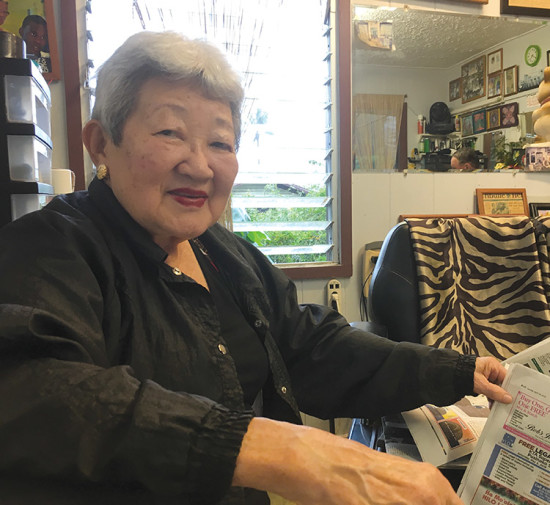
Over at Jan’s Barber Shop, Jan Ikeda will tell you all about that fateful day in 1953 when the cane truck lost its brakes and went barreling into her family’s business. She has the photograph to show in one of her many collages of memories on the wall of her barbershop. The ‘Ōla‘a Sugar Company brought in a crane to hoist the truck and trailer onto the road, and carpenters from the plantation restored the building to its original condition, according to Hiroo’s report.
“I still remember when they used to go out and work in the cane fields and cut cane piece by piece,” Jan recalls. “Then later on the mechanical harvester came and did the harvesting with the machine.” She noted that before there were cane trucks, there were cane trains that would bring the cane from Kapoho to the ‘Ōla‘a Sugar Mill via Pāhoa. In fact, the train tracks were right beside the barbershop.
This year Jan’s Barber Shop celebrates 69 years in business. “Anybody else who has that record?” asks Jan. “We will stay in business,” the 83-year-old says, adding that she has to “keep [herself] strong.”
Like Aiko, Jan refers to the “mom and pop stores” of the past. “We had two bakeries. We had a fish market. We had stores like Yamaguchi Store, Soichi Store, Miura Store.” Some of these stores sold candies, ice cream, and other goodies; others sold supplies like toilet paper and Kleenex. “Small stores. But they’re all gone.”
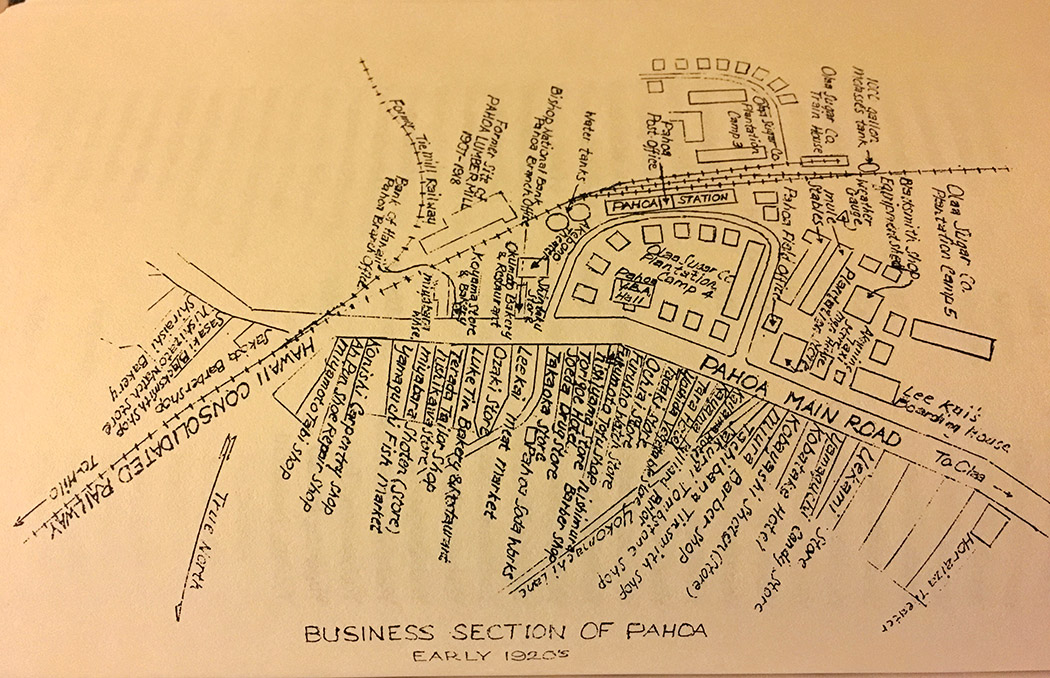
Elson Kalawe stands outside Boogie Woogie Pizza, recalling the old Shiigi Store that used to be there. “When you walked in, to the right was a Coca-Cola cooler with ice, no electricity, and they had the sodas in there.” He recalls the store also had tilted glass jars filled with candy. “We used to have credit. We could walk in the store, ‘Oh, my tutu is paying for this later,’ grab what you need and walk out,” Elson says.
Elson points to the open field across the street, where Luquin’s Mexican Restaurant used to be located. “Toma’s Bakery was right over there,” he says. According to Hiroo, Haruko Toma started his bakery in 1939 and he was known for his sweetbread in particular.
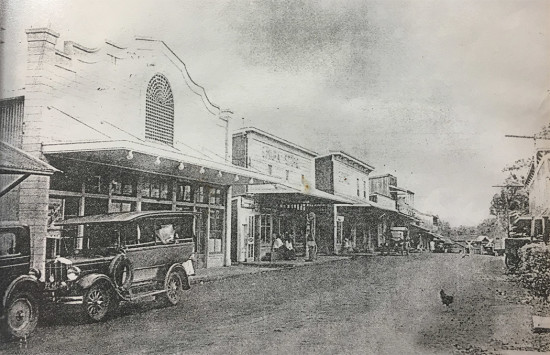
There were benches in front of all the stores, Elson recalls. “Japanese here, Filipinos here. Hawaiians there,” he says, pointing to different storefronts along the boardwalk. “They would walk up and talk to each other. They all got along.”
“Pāhoa was a very quiet town,” Jan says. “Everybody knew each other. Today you don’t know anybody. My customers, all the old Japanese men are gone, and their children are already in their 90s. Many of them left here because, when the lava came, they moved out to Hilo, and, as they got older, they said, ‘Oh, we can’t live in Pāhoa because it’s too far from the hospital.’ So, we only have a few Japanese people and a lot of newcomers.”
Over the years, Jan has seen the population in Puna swell as a result of all the subdivisions created in the 1960s. To her, that’s the most distinct difference about Pāhoa, then and now: the newcomers.
“You can’t fight progress, and I like to see new people come,” she says, noting she meets people from all over who recently moved here or who want to get their hair cut before returning home from vacation.
Pāhoa Now
At the time this issue was being sent to press, the Leilani lava flow had been in action for more than three months and had just about stopped. Merchants say that Pāhoa feels normal again. Of course there are constant reminders that Pele is still in charge. With most of Hawaiʻi Volcanoes National Park being closed, and with great efforts by the local organizations and among the dedicated merchants, Pāhoa has the potential of becoming the new gateway to Pele’s home on the slope of Kīlauea.
What it took to bring people back to Pāhoa with a volcanic eruption a few miles away for three months was a huge effort led by the members of the Mainstreet Pāhoa Association and its Board of Directors. As a 501(c)6 organization which supports local businesses, and works with the community, other nonprofits and government agencies, the association had enough cache and connections to get doors to open. The mayor and governor reassured the public that only a tiny part of Hawai’i Island had been affected by the lava flow, and that the town of Pahoa was safe. During the Fissure 8 lava flow, the pleas for kokua (help) to save Pāhoa Town helped break down the initial fears that had kept people away.
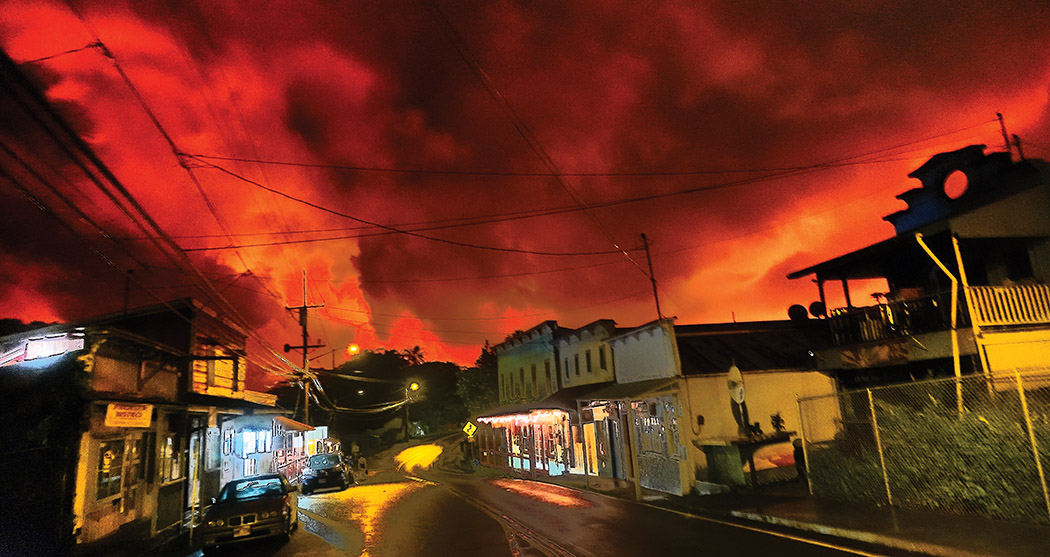
The dedication of a few movers and shakers within the town rallied to quickly create a benefit concert on July 21 which included closing Pāhoa Village Road to vehicles and installing two different stages for live music. In addition to many talented resident musicians, Marty Dread and Tavana came to Pāhoa to perform and delight the crowd. Grass-roots organizations like Pu‘uhonua o Pūna and the Bodacious Ladies of Nanawale had donation booths on site and the under-construction Puna Kai Shopping Center down the road provided parking. Kapoho Kine Tours provided shuttle-buses all day and night. It was inspiring to see the island community come together in support. Kealoha Kelley, owner of Pahoa Used Books and Movies quipped, “We like to think that this event helped put us back on the map!”
Pāhoa craftsman and owner of Puna Gallery and Gift Emporium Amedeo Markoff says, “Our business dropped off for about a month when the new flow began; however since then business has slowly been improving and weʻre seeing people coming from all parts of the island and world who want to support our community and view the amazing volcanic spectacle. Even if the lava stops, we have some of the best restaurants, galleries and shops anywhere on the island, if you haven’t visited lately, come soon!” ❖
For more information: pahoatown.org

